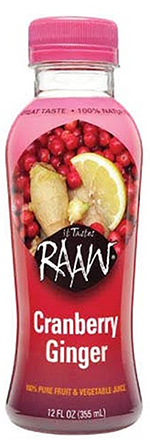The Rise of the Sommelier
As a wine event for wine professionals. ProWein (International Trade Fair for Wines and Spirits) has gained significant momentum over the past few years as they have refined, and redefined the large scale tasting experience. While the work that has gone on behind the scenes cannot be over-stated, the fact that it remains an event exclusively for the wine professional has played a significant part in its growing reach.
While wine buyers have been both professional and influential for decades, that has not been true of one of the other great constituents of ProWein: the sommelier. Today the sommelier plays an ever more powerful part in the dissemination of wine knowledge, and has become an integral part of ProWein’s reach and success.
Sommeliers did not always have the influence and power that they have today. In the past they were often looked upon as simply wine waiters, and with good reason, there was little in the way of professional ambition and the trade simply did not reward the overachievers. That began to change in earnest only in the 1980s with a crop of professionals such as Kevin Zraly at Windows on the World, Daniel Johnnes at Montrachet, and Larry Stone of Charlie Trotter’s.
During those golden years in the 1980s sommeliers had distinct advantages over those working the trenches today. Great wines were still unknown, available, and underpriced, and the audience for them was uneducated, if eager to learn. Into this scene men, and it was all men at the time, started to make magic happen. Restaurants began to gain fame for their wine lists, as well as for their food, and the sommelier, increasingly a presence on the scene, was responsible.
One should also note that the 1980s were a pivotal moment in the development of broad wine culture in the USA. Thanks to a rich media that focused on wine, as well as individuals, such as Robert Parker, who were changing the ways of wine criticism, making fine wine easier to find, and easier to understand.
People of course took note, and the mainstream media began to fully embrace wine as part of the dining experience. The words of Ruth Reichl reviewing Montrachet in the NY Times in July of 1994, admittedly nearly a decade after opening, capture the moment in all it’s glory as readers were teased and tempted with prose such as:
“Would you like a little sweet wine to go with that foie gras? The wine list has been beautifully orchestrated to go with the food, and few restaurants can match Montrachet when it comes to wine service. If you ask for a suggestion from the list you will receive not only good advice but also the information that the ’83 is preferable to the ’85 because botrytis, the “noble rot” that gives Sauternes its complexity, was almost absent in 1985. This is offered matter of factly, without an ounce of pretension. And while the list is filled with great wines, when you ask the sommelier, Daniel Johnnes, for advice, he instantly reels off a list of delicious and inexpensive bottles, discussing them as lovingly as if they were grand crus.”2
To a large extent this leap forward in professionalism was aided by the Court of Master Sommeliers, an educational body established in 1969 to both promote the profession and introduce a rigorous system of testing and credentials where none had existed before. While the program was originally established in the UK, of the 230 professionals awarded the title of Master Sommelier since inception, 147 are from the United States;3 indicative of both the perceived value of the program here in the States as well as the vibrancy of the trade.
As it so happened, the struggles of a small group of these Master Sommelier students has served to reveal the inner workings of the profession to a broad audience. Somm the movie, released in 2012, chronicled the trials of aspiring Master Sommeliers. The movie, while only a modest box-office success, garnered impressive reviews from mainstream movie critics as well as an impressive 77% on Rotten Tomatoes4 and a four and a half star rating on Amazon5, where the movie remains available for viewing. It was a breakthrough moment for Sommeliers, connecting with the public at large as the movie Sideways did a decade earlier, fine dining reviewers in the 1990s and the revival of wine criticism did in the 1980s. The movie served as the most recent example of mainstream media making wine more relatable while fostering a further appreciation of what it means to be a true wine professional.
While Master Sommeliers remain rare, true wine professionals abound, particularly in cities such as New York where one finds both the restaurant culture willing to cultivate such talent and the community to support it. Discussing the present state of the sommelier with a few of the finest practicing here in NYC revealed a perspective not often seen by the end consumer. Rajeev Vaidya, Head Sommelier at restaurant Daniel here in NYC, was quick to note the change from niche sage to an influencer of a broader market.
“The role has changed from wine waiter to trend setter/ brand maker. We have enormous influence over the market and wine popularity. There are many wine lovers/collectors who hold my opinion in the highest regard and use my tastes as buying guides who have never even dined at the restaurant!”
With their influence previously limited to the confines of their dining rooms, it’s not surprising that the reach of social media would prove a boon to amplifying the influence of the top players. Previously their valuable advice was dispensed judiciously tableside, but now we are all able to sit at that table, and people want to know what they’re talking about! Jeffrey Kellogg, Wine Director of NYCs Maialino restaurant sees this influence with regularity, commenting:
“Somms sure seem to have replaced scores for educating guests on what wines to be drinking. Where somms used to talk with guests asking about wines because they received a high score, now guests ask me if I carry a wine because they saw a somm Instagram it. “
One of those Somms might very well be Patrick Cappiello, Wine Director of Pearl & Ash and Rebelle restaurants who is an enthusiastic user of Instagram finding it to be “a fun creative way to present what can often be a pretentious and “show off” based career.” or Michael Madrigal, Head Sommelier at Bar Boulud, Épicerie Boulud, and Boulud Sud who posts a picture of his daily big bottle by the glass pour, often adding a bit of humor to his post, keeping things fun and unpretentious, and accessible to the public at large.
With this newfound influence and accessibility though comes great responsibility: the next page in the sommelier saga. The power to recommend wines, introduce new regions to the public, or focus on certain estates is well within the realm of the possible today, but as we look forward to the future we should consider the wise words of Pascaline Lepeltier M.S. and Beverage Director at Rouge Tomate as she voices her opinion of how the star sommelier can fulfill his, or now increasingly her, true potential.
“Right now, unless we realize we can be part of a broader food movement, trying to show you can eat and drink differently by supporting alternative agriculture and viticulture practices for the long run, for the future of the planet, and saying no to outrageous marketing, globalization, and industrialization of agriculture product. Being media driven is short-sighted and self-centric. But if it is about using the media to be that voice, then yes, let’s use it!”
As in all professions, if you’re not improving, you’re losing ground. Sommeliers keep on top of their game by tasting wines and talking to producers. While there is no substitute for visiting a vineyard, events such as ProWein offer the wine professional a chance make the most of three days of tasting.
With over 4,000 exhibitors, dozens of daily seminars, and the opportunity to meet the world of winemakers all under one enormous roof (there are actually several but you get the idea) ProWein is the consummate wine event for the wine professional; one can just as easily taste through the wines of dozens of producers from larger regions such as Rioja or Chianti Classico or sit down for in-depth and extensive tastings with geek favorites Chateau Musar or Mas de Dumas Gassac. As we have learned, the job of a professional sommelier is incredibly hard work, experiences such as visits to ProWein not only are part of the job, they are part of the reward that all sommeliers deserve. Their next opportunity is from March 13 – 15, 2016 at the fairgrounds in Düsseldorf, Germany.
Gregory Dal Piaz has been involved with wine for over three decades, in restaurants, retail, and writing. Editor-in-Chief of SimplyBetterWines.com, he has spent 2015 researching and writing in Chianti for a book to be released next year.






